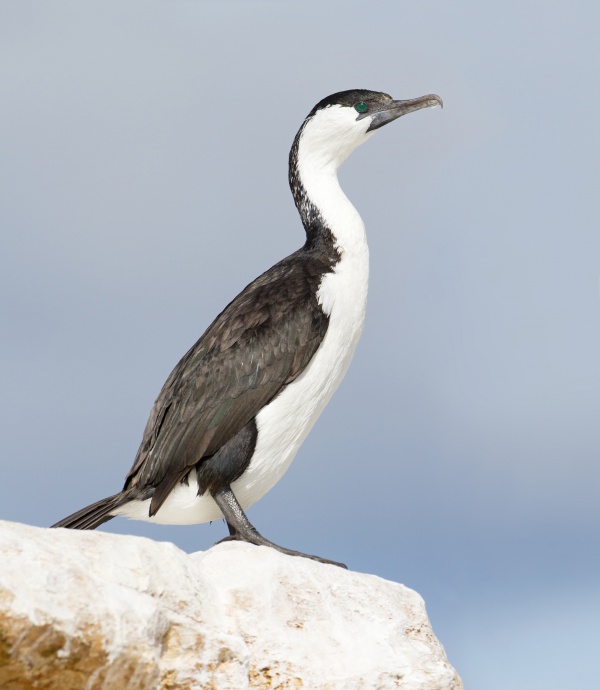Facts About Black-faced cormorant
The black-faced cormorant, commonly known as the black-faced shag, is a medium-sized bird belonging to the cormorant family, frequently found along the southern coast of Australia. These birds are easily identifiable by their black upper parts, which include their facial skin and bill, contrasted with white underparts. They possess distinct characteristics such as a large size, hooked bill, webbed feet, and straightforward black-and-white plumage. Both their breeding and non-breeding plumage appear quite similar, though juveniles exhibit dark brown feathers on their upper parts and a lighter underside streaked with brown. Males, being larger and more robust than females, also have proportionately larger bills.
Although generally silent when away from their breeding colonies, black-faced cormorants become quite noisy at their nests, emitting loud honks and hisses. Their diet primarily comprises fish, which they catch by diving to depths of up to 12 meters along the coast. They have a particular preference for benthic or demersal fish and cephalopods. These birds typically nest in pairs or in colonies on islands or cliffs, laying 2 to 3 pale blue-green eggs.
Perfectly adapted to their marine environment, black-faced cormorants excel at diving to catch their prey and nest high on cliffs to avoid predators. They inhabit coastal waters, inlets, rocky shores, and offshore islands in southern Australia and Tasmania. The IUCN has classified them as 'Least Concern' due to their extensive range and stable population numbers, although they are considered 'Vulnerable' in Victoria. Their breeding colonies are highly sensitive to human disturbances, underscoring the importance of protecting their habitats.
